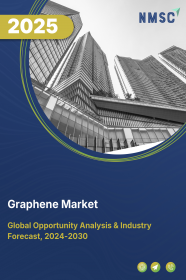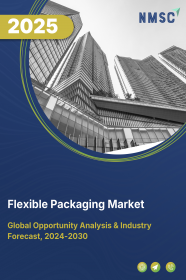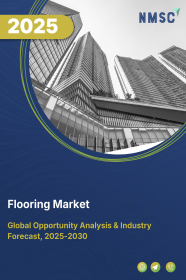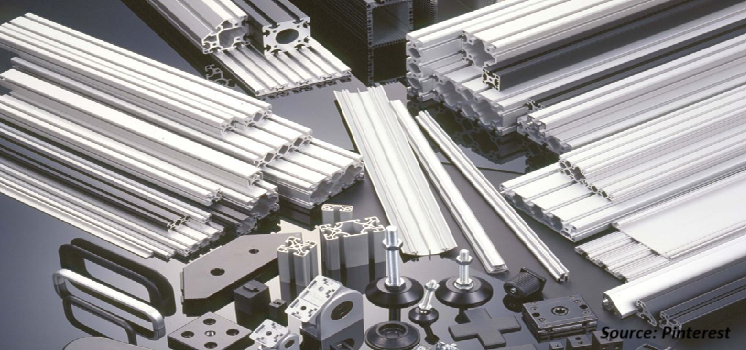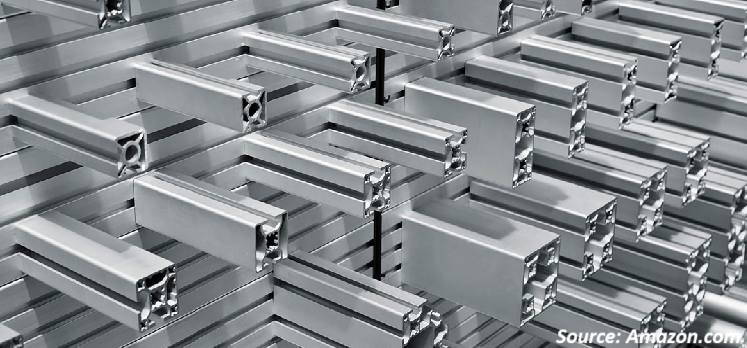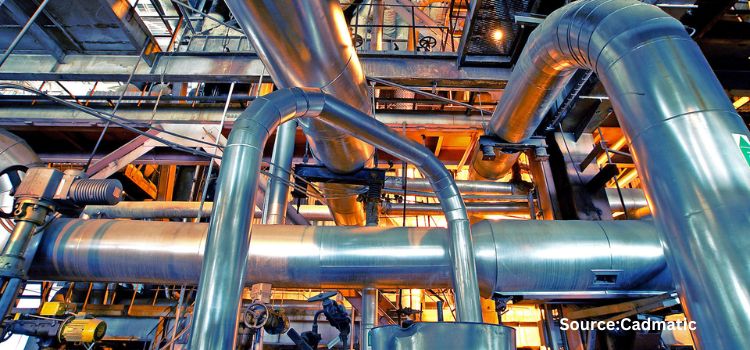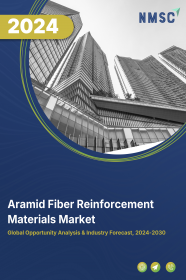
Aramid Fiber Reinforcement Materials Market by Type (Para-Aramid Fibers, Meta-Aramid Fibers, and Others), by End Use (Aerospace & Defense, Automotive, Consumer Goods, Marine, and Others)- Global Opportunity Analysis and Industry Forecast, 2020 – 2030
Industry: Materials and Chemical | Publish Date: 31-Dec-2024 | No of Pages: 321 | No. of Tables: 206 | No. of Figures: 176 | Format: PDF | Report Code : MC297
US Tariff Impact on Aramid Fiber Reinforcement Materials Market
Trump Tariffs Are Reshaping Global Business
Market Definition:
The global Aramid Fiber Reinforcement Materials Market size valued to USD 3.73 billion in 2019, shall garner USD 7.83 billion by 2030, with a growing CAGR of 6.7% from 2020-2030.
Aramid fiber reinforced materials are a class of heat-resistant and strong synthetic fibers made of a polymer matrix reinforced with aramid fibers; having an extremely high melting point of more than 500 °C. Due to its characteristics like high temperature resistance, high elastic modulus, high abrasion resistance and high tensile strength, it holds wide applications in end-users like aerospace & defense, automotive, consumer goods, marine, and others. In the defense sector it is majorly used to make body armour fabrics or bullet-proof vests and other ballistic composites.
Market Dynamics and Trends:
The global aramid fiber reinforcement materials market is observing lucrative market opportunities with a constant elevation in the growth chart, owing to ascending demand from aerospace & defense sector, rise in safety & security concerns, increasing onshore and offshore drilling activities in oil & gas sector, stringent regulatory standards regarding workplace safety, as well as higher inclination towards weight reducing materials that tend to decrease energy-consumption and increase the operational efficiency of the finished goods.
Furthermore, benefits offered by the aramid fiber reinforcement materials such as light weight, excellent flame, heat resistance, low creep, thermal dimensional stability, as well as high strength, toughness, and modulus; are anticipated in propelling the growth of the aramid fiber reinforcement materials market in future.
However, factors such as non-bio degradable nature of aramid fiber, higher sensitivity towards ultra-violet radiations as well as humidity, plus high production cost, capital investments and fluctuating prices of raw-materials is expected to inhibit the growth of aramid fiber reinforcement materials market.
Moreover, investment towards development of innovative technologies leading to lower the manufacturing cost and level-up the operational efficiency, plus the ongoing R&D activities in this sector, are expected to fuel-up the aramid fiber reinforcement materials market growth in the coming future.
Market Segmentations and Scope of the Study:
The global aramid fiber reinforcement materials market share analysis is based on type, end use industry, and geography.
Based on type, the market is segmented into Para-Aramid Fibers, Meta-Aramid Fibers, and Others. Based on end use, the market is divided into Aerospace & Defense, Automotive, Consumer Goods, Marine, and others. Geographic breakdown and analysis of each of the previously mentioned segments include regions comprising North America, Asia-Pacific, Europe, and RoW.
Geographical Analysis:
North America has dominated the global aramid fiber reinforcement materials market in the past, and is expected to maintain its dominance throughout the forecast period, holding the highest market share. This is attributed to factors such as stringent regulations pertaining to the security and protection measures, growing number of refurbishing activities, presence of key market players in this region as well as growing demand of these materials from the transportation and protective clothing sector.
Asia Pacific is expected to be the fastest developing region owing to the presence of developing economies, increased urbanization, and growing demand of IoT and telecommunication in this region. Furthermore, developments of industrial sectors such as automotive, electronics, aviation and others raise the demand of aramid fiber on a large scale, this in-turn shall supplement the growth of the aramid fiber reinforcement materials market, over the forecast period.
Competitive Landscape:
The aramid fiber reinforcement materials market, which is highly competitive, consist various market players. Some of the major market players include E. I. du Pont de Nemours and Company, Teijin Ltd., Kolon Industries, Inc., Honeywell International Inc., SRO Aramid (Jiangsu) Co., Ltd., Hyosung Corporation, Toray Industries, Inc., Yantai Tayho Advanced materials Co., Ltd., Ibiden Co., Ltd., and Huvis Corporation, among others.
The past endeavors and futuristic advancements, sum-up to comprehend the overall growth of the global aramid fiber reinforcement materials market.
For instance, in January 2020 CFK Recycling firm, based in German was winner of the Sustainable Industry Challenge – Chemport Europe edition, for developing a method for sustainably recycling carbon fibres. CFK Recycling won € 100,000 to spend on Teijin Aramid’s sustainability challenge by recycling aramid.
Furthermore, in March 2020, one of the key players of the global aramid fiber reinforcement materials market, Kolon Industries, SKC sold stakes in their joint venture SKC Kolon PI, a PI a polyimide film company, for some 300 billion won ($250 million) in a bid to acquire seed funding to nurture new businesses. Kosdaq-listed SKC Kolon PI is the world’s largest polyimide film manufacturing company. This strategic stake sell-off aims at propelling the company’s fast-growing aramid fiber and transparent PI film businesses. The company also expects to invest in R&D projects and to propel the manufacturing lines. While trying to achieve organic growth with its internal capabilities, it will also seek for inorganic growth via M&As and strategic partnerships.
KEY BENEFITS:
-
The aramid fiber reinforcement materials market report provides a quantitative analysis of the current market and estimations through 2020-2030 that assists in identifying the prevailing market opportunities to capitalize on.
-
The study comprises a deep dive analysis of the aramid fiber reinforcement materials market trend including current and future trends for depicting the prevalent investment pockets in the market.
-
The report provides detailed information related to key drivers, restraints and opportunities and their impact on the aramid fiber reinforcement materials market.
-
The report incorporates competitive analysis of the market players along with their market share in the global aramid fiber reinforcement materials market.
-
The study elaborates SWOT analysis and Porters Five Forces model for the aramid fiber reinforcement materials market.
-
Value chain analysis in the aramid fiber reinforcement materials market study provides a clear picture of the stakeholders’ roles.
KEY MARKET SEGMENTS:
By Type
-
Para-Aramid Fibers
-
Meta-Aramid Fibers
-
Others
By End Use
-
Aerospace & Defense
-
Automotive
-
Consumer Goods
-
Marine
-
Others
By Geography
-
North America
-
U.S.
-
Canada
-
Mexico
-
-
Europe
-
UK
-
Italy
-
Germany
-
Spain
-
Netherlands
-
Rest of Europe
-
-
Asia-Pacific
-
China
-
Japan
-
India
-
Australia
-
South Korea
-
Taiwan
-
Vietnam
-
Rest of Asia Pacific
-
-
RoW
-
Latin America
-
Middle East
-
Africa
-
REPORT SCOPE AND SEGMENTATION:
|
Parameters |
Details |
|
Analysis Period |
2019–2030 |
|
Base Year Considered |
2020 |
|
Forecast Period |
2020–2030 |
|
Market Size Estimation |
Billion (USD) |
|
Market Segmentation |
By Type (Para-Aramid Fibers, Meta-Aramid Fibers, Other Types) By End Use Industry (Aerospace &Defence, Automotive, Consumer Good, Marine, Other End Use Industry) |
|
Geographical Segmentation |
North America (U.S., Canada, Mexico) Europe (UK, Italy, Germany, Spain, Netherlands, Rest of Europe) Asia-Pacific (China, Japan, India, Australia, South Korea, Taiwan, Vietnam, Rest of Asia Pacific) RoW (Latin America, Middle East, Africa) |
|
Companies Profiled |
E. I. du Pont de Nemours and Company, Teijin Ltd., Kolon Industries, Inc., Honeywell International Inc., SRO Aramid (Jiangsu) Co., Ltd., Hyosung Corporation, Toray Industries, Inc., Yantai Tayho Advanced materials Co., Ltd., Ibiden Co., Ltd., and Huvis Corporation. |
KEY PLAYERS
-
E. I. du Pont de Nemours and Company
-
Teijin Ltd.
-
Kolon Industries, Inc.
-
Honeywell International Inc.
-
SRO Aramid (Jiangsu) Co., Ltd.
-
Hyosung Corporation
-
Toray Industries, Inc.
-
Yantai Tayho Advanced materials Co., Ltd.
-
Ibiden Co., Ltd.
-
Huvis Corporation

















 Speak to Our Analyst
Speak to Our Analyst



